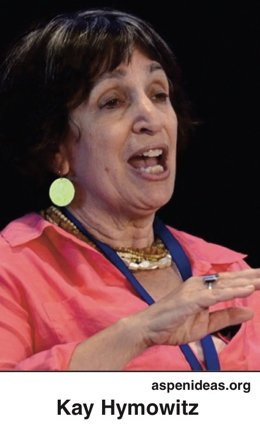Rascals case in brief
In the beginning, in 1989, more than 90 children at the Little Rascals Day Care Center in Edenton, North Carolina, accused a total of 20 adults with 429 instances of sexual abuse over a three-year period. It may have all begun with one parent’s complaint about punishment given her child.
Among the alleged perpetrators: the sheriff and mayor. But prosecutors would charge only Robin Byrum, Darlene Harris, Elizabeth “Betsy” Kelly, Robert “Bob” Kelly, Willard Scott Privott, Shelley Stone and Dawn Wilson – the Edenton 7.
Along with sodomy and beatings, allegations included a baby killed with a handgun, a child being hung upside down from a tree and being set on fire and countless other fantastic incidents involving spaceships, hot air balloons, pirate ships and trained sharks.
By the time prosecutors dropped the last charges in 1997, Little Rascals had become North Carolina’s longest and most costly criminal trial. Prosecutors kept defendants jailed in hopes at least one would turn against their supposed co-conspirators. Remarkably, none did. Another shameful record: Five defendants had to wait longer to face their accusers in court than anyone else in North Carolina history.
Between 1991 and 1997, Ofra Bikel produced three extraordinary episodes on the Little Rascals case for the PBS series “Frontline.” Although “Innocence Lost” did not deter prosecutors, it exposed their tactics and fostered nationwide skepticism and dismay.
With each passing year, the absurdity of the Little Rascals charges has become more obvious. But no admission of error has ever come from prosecutors, police, interviewers or parents. This site is devoted to the issues raised by this case.
On Facebook
Click for earlier Facebook posts archived on this site
Click to go to
Today’s random selection from the Little Rascals Day Care archives….
Click for earlier Facebook posts archived on this site
Click to go to
Today’s random selection from the Little Rascals Day Care archives….
Memphis paper first to link ‘satanic ritual abuse’ cases
 Jan. 4, 2019
Jan. 4, 2019
In January 1988 the Memphis Commercial Appeal published a 36-page special section recapping its recent series, “Justice Abused: A 1980s Witch Hunt” by Tom Charlier and Shirley Downing.
“Justice Abused” was the first major news coverage to link “satanic ritual abuse” cases across the country and to
characterize them as a witch hunt.
In his Pulitzer Prize-winning criticism of how the news media so often mishandled cases such as McMartin Preschool, David Shaw of the Los Angeles Times credited Charlier and Downing with pointing out “among many other things, the large number of child molestation cases that had resulted in dismissals, acquittals and dropped charges and the startling number of similarities among many of the cases.
Children in both the Memphis and McMartin cases, for example, told of druggings, of animal mutilations, of trips in vans, of bloody rituals, of sacrifices of babies and of being taken on airplanes that resembled those of Federal Express.”
Until now this historically important series has not been available digitally. It is archived in two pieces here and here on our Bookshelf.
![]()
Steinem made case for believing the unbelievable
 Sept. 1, 2015
Sept. 1, 2015
“(As witnesses) children are even less likely to be believed when their stories involve extremes of sadism, collusion among families and communities (sometimes extending over several generations) and so-called ritual or cult abuse – including the torture and killing of animals to frighten children into silence – that are so terrible that authorities decide these things just can’t be true.
“Yet many instances of such ‘incredible’ crimes are documented, sometimes by adults after years of suppressed memory, sometimes by authorities who are now beginning to believe children enough to investigate their stories…..”…
– From “Revolution From Within: A Book of Self-Esteem” by Gloria Steinem (1993)
Steinem’s semi-autobiography was a best-seller, both profiting from and contributing to the nation’s heightened concern with self-esteem.
In addition to using Ms. magazine to tout the existence of “ritual abuse,” she also helped finance the search for the imaginary McMartin tunnels.
Parents’ gullibility ‘grounded in anxiety’
Nov. 25, 2011
“In the prototypical witch hunts in Europe and in the Massachusetts colony, the accused were often scapegoats for some calamity – disease, bad harvests, the birth of a deformed child.
 “In the witch hunts of the ’80s, there was no such injury to be avenged or repaired. There was, however, a psychological need to be fulfilled. Our willingness to believe in ritual abuse was grounded in anxiety about putting children in day care at a time when mothers were entering the work force in unprecedented numbers.
“In the witch hunts of the ’80s, there was no such injury to be avenged or repaired. There was, however, a psychological need to be fulfilled. Our willingness to believe in ritual abuse was grounded in anxiety about putting children in day care at a time when mothers were entering the work force in unprecedented numbers.
“It was as though there were some dark, self-defeating relief in trading niggling everyday doubts about our children’s care for our absolute worst fears – for a story with monsters, not just human beings who didn’t always treat our kids exactly as we would like; for a fate so horrific and bizarre that no parent, no matter how vigilant, could have ever prevented it.”
– Margaret Talbot, writing in The New York Times Magazine, Jan. 7, 2001
‘Antifeminism’ to blame? Not so fast, Mr. Beck
 Aug. 24, 2015
Aug. 24, 2015
“(Richard) Beck is generally restrained in his narrative, letting the details pile up to a well-deserved indictment of the many players in the ‘moral panic.’ But in explaining how these fever dreams managed to seize the national imagination, he does a little witch-hunting of his own. The frenzy, he tells us, was a backlash by family-values conservatives to the social changes around them. It was a period of ‘an intense reactionary antifeminism.’
“This is an inexcusably partial interpretation. From Beck’s own evidence, feminists themselves were vital players in the hysteria. Gloria Steinem donated money to the McMartin investigation, and Ms. Magazine ran a 1993 cover article ‘BELIEVE IT! Cult Ritual Abuse Exists,’ even though, by that time, the general public had grown increasingly skeptical of the idea.
“In part because of her aggressive pursuit of child abusers – and conviction of a number of people later exonerated – a relatively unknown Dade County state attorney named Janet Reno was picked by President Clinton to become the nation’s first female attorney general. According to Debbie Nathan and Michael Snedeker, the authors of ‘Satan’s Silence,’ (Kee) MacFarlane had been a lobbyist for NOW before she set about terrifying the children of Manhattan Beach.
“With his partisan recounting of the child abuse panic of the 1980s, Beck turns what could have been a careful history about one facet of the nation’s exhausting culture wars into one more illustration of them.”
– From “ ‘We Believe the Children,’ by Richard Beck” by Kay Hymowitz in the New York Times Sunday Book Review (Aug. 21, 2015)
I’m posting this criticism of Beck’s book – from an otherwise laudatory review – mostly for archival purposes. My own interest lies less in the tangled roots of the day-care panic than in its results: defendants wrongfully incarcerated, children profoundly misguided and therapists and prosecutors unjustly unscathed.











0 CommentsComment on Facebook